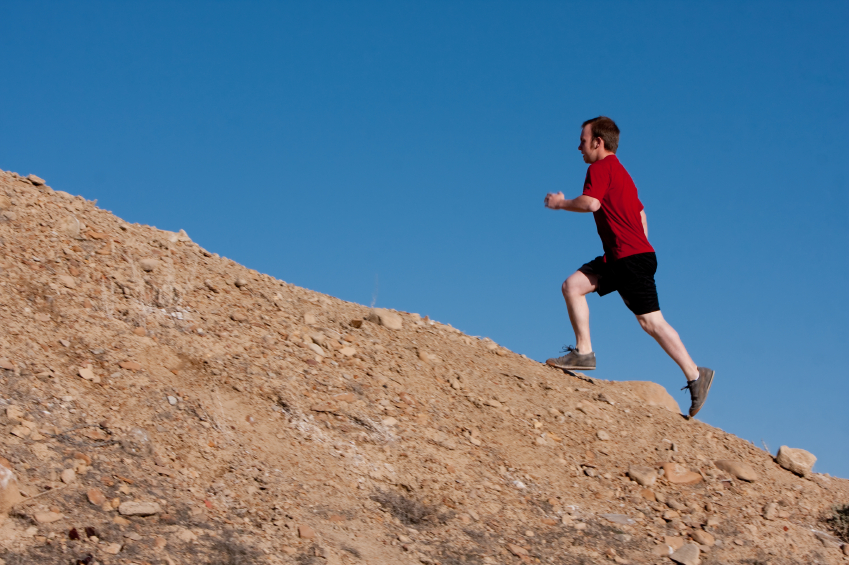
The first time I remember running a hill was when I was eight years old. My father, my uncle, my cousin, and I ran this really long hill at our cabin. Before we ran up it, my father said, “This is where we separate the men from the boys.” The hill seemed to go on forever, and I can still remember how incredibly exhausted I was once we finally reached the top. There wasn’t any pacing yourself either. You ran the hill as hard as you possibly could the entire way up. There was a sense of pride that went along with being able to run that hill. It was the biggest hill around, and to be able to get to the top of it gave you an objective marker by which to measure your “greatness.” That was a hill I ran frequently when we visited our cabin in the following summers, and while it was a great workout, it was always the glory that went along with making it to the top that brought me back for another round.
The summer before my freshman year of high school, I began to take my training much more seriously. That summer, I started adding in hill runs more regularly while at home. My parents’ house was about half a mile from farmland and rolling hills, and that’s where my father showed me another set of hills that brought the same burning of the legs and lungs and the same feelings of glory. These hills could be run any time of the year, and as often as the weather changed, so did my running partners. Some days I went solo, some days I went with my father, and some days my brother joined me or my father and I. One summer, my brother and I and up to six of his friends ran those hills every Saturday morning. Those were the best runs.
While we kept our times from week to week to mark improvement, it was never about how fast you could run the hills. Rather it was always about running up the hills as hard as you possibly could, pushing yourself to be the best you could be on that day. Success wasn’t measured by the number of minutes and seconds that elapsed from departure to arrival but by the hybrid feeling of pain and satisfaction with every inhalation lasting hours after completion. That was the greatest lesson that the hills taught me.
When I got to college, I took advantage of my new mountainous surroundings, running hills in the fall and spring. In the fall of my sophomore year, I switched the route I was running to incorporate running up the side of a mountain. It was one of the most physically demanding workouts I did, with one trip up often times being more than enough. But every Saturday morning, I was back running on what I now refer to as “Self-Made Mountain.” Self-Made Mountain brought new challenges, such as climbing severe inclines and being chased by dogs, but every step was fueled by the view that awaited me at the top. On clear mornings, you could see for miles, and as fall progressed, the foliage set the landscape ablaze. Whether Self-Made Mountain was run solo or with a teammate, it was always run the same way, the way the hills had always been run—as hard as you possibly could on the way up and slow and controlled on the way down.
We all have hills in our lives—times of struggle and times of ease. But how you choose to run them will determine a lot. You can either put your life on cruise control, going at the same pace day in and day out, never switching things up or taking the time to assess and appreciate where you are. You can claim this lifestyle is most efficient, using your numbers to back these claims because the numbers are all you really care about anyway. Or when you’re presented with a challenge, you can put everything you have into conquering it, exhausting yourself so that once you do reach the top, you have no choice but to stop and enjoy the view.
Perhaps this is where the efficiency of the way I live my life starts to unwind. Perhaps focusing solely on the destination is, in fact, the best way to get there. If this is true, then perhaps all the ideas in my head will only turn out to be just that—ideas in my head. But while the possibility of failure and decline loom on paper, it is the burning in my lungs that marks progress, because while the destination is motivation, the journey is why I breathe. Thus I choose to live the latter. Get big or die trying.









